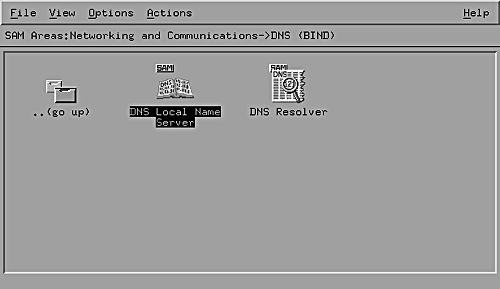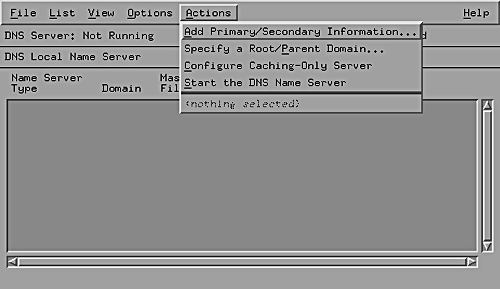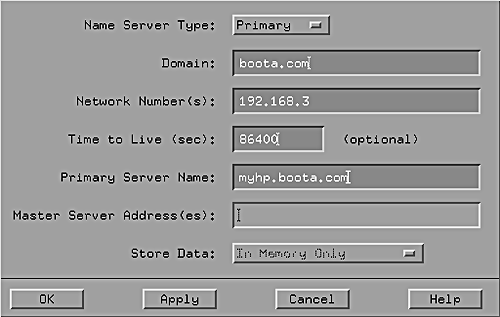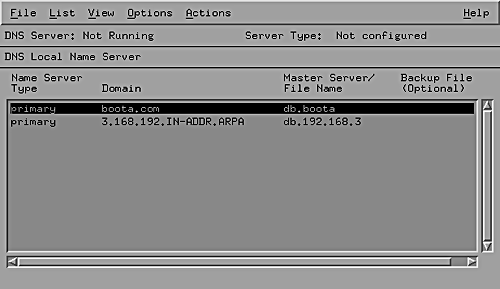31.8 Using SAM to Configure DNS
| |
SAM can also be used to create a basic structure of DNS data base files. When you select the DNS (BIND) icon in the Networking and Communications area of SAM, a window like the one shown in Figure 31-3 appears.
Figure 31-3. DNS configuration window.

From this window the DNS Local Name Server icon is used to configure DNS data base files and the DNS Resolver icon is used to configure the /etc/resolv.conf file. Click on the DNS Local Name Server icon to move to the window in Figure 31-4.
Figure 31-4. Creating a primary name server.

If a DNS is already running, you will find its data files listed here. If a DNS is not running, use the Actions menu to create files for a primary or secondary DNS as shown in Figure 31-4. When you select Add Primary/Secondary Information from the Actions menu, you find a new window as shown in Figure 31-5.
Figure 31-5. Entering information for the primary DNS data files.

Here you enter information for a primary or secondary server. The selection of a primary or secondary server is made using the Name Server Type button at the top part of the figure. When you click the OK button, a warning window appears as shown in Figure 31-6.
Figure 31-6. Confirmation to create data files.

After selecting Yes in this window, you return to the window shown in Figure 31-3 but with the DNS data files now listed as shown in Figure 31-7.
Figure 31-7. List of newly created DNS data files.

You can modify any of these files using options in the Actions menu.
| |
| |
| Top |
EAN: 2147483647
Pages: 390